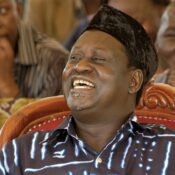Forex & CFD Trading: How it works and how to Start.
Forex & CFD Trading: How it works and how to Start.
By Odongo E. (2024)
What Are CFDs and How Does Online Trading Really Work?
CFDs, or Contracts for Difference, are financial instruments that allow traders to speculate on the price movement of assets without actually owning them. Instead of buying physical gold, oil, or shares, you simply enter into a contract with a broker to exchange the difference in the asset’s value between the time you open and close a trade.
There’s no physical delivery involved. If you open a trade on gold and close it when the price has moved, you either make a profit or a loss depending on the direction of the movement. The difference is settled in cash.
A Practical Example:
Let’s say you’re trading XAUUSD (the symbol for gold):
-
You buy at $1910.6/oz.
-
The price rises to $1915.6/oz.
-
You close the trade and make a profit of $5 per ounce.
Unlike shares where you need to find a buyer to sell, with CFDs, you just close the trade, and your profit (or loss) is credited to your account immediately.
If you had sold gold at $1910.6/oz and the price fell to $1905.4/oz, you would also make a profit—because you predicted the price would drop. However, if the market goes in the opposite direction, you incur a loss.
What Assets Can You Trade as CFDs?
CFDs cover a wide range of financial instruments:
-
Currency Pairs (Forex): e.g. EUR/USD, GBP/JPY
-
Cryptocurrency CFDs: e.g. BTC/USD
-
Metals & Futures: e.g. Gold, Silver
-
Energies: e.g. USOIL (Crude Oil)
-
Indices: e.g. NASDAQ 100 (USTEC), Dow Jones (US30)
-
Stocks: e.g. Tesla, Amazon, Netflix
Note: Trading real cryptocurrencies is different from trading crypto CFDs, although both can be accessed via some platforms.
How Do You Know Which Direction the Market Will Move?
This is where analysis comes in:
-
Technical Analysis – Studying price charts and patterns (candlesticks, trends, indicators).
-
Fundamental Analysis – Monitoring economic news such as GDP, inflation, interest rates, and employment data.
CFD trading is based on supply and demand, and timing is critical. Markets are open 24 hours (UTC time) and are analyzed across multiple timeframes – from 1 second to 1 month. Most price movements are shown using candlestick charts (those red and blue bars on forex graphs).
Getting Started in CFD or Forex Trading
To begin trading, you’ll need:
-
A regulated forex broker – Ensure the broker is licensed, e.g., by the Capital Markets Authority (CMA) in Kenya.
-
Account Verification (KYC) – Submit valid ID and proof of address.
-
A trading platform – Most brokers support MetaTrader 4 (MT4) or MetaTrader 5 (MT5). These apps are free on Google Play or App Store.
-
A secure deposit method – Some brokers, like Exness, support MPESA for Kenyan traders:
👉 Register with Exness
Important Reminder: Trading Is NOT a Get-Rich-Quick Scheme
Many people are misled by fake promises. In reality:
-
It takes time to learn and build consistent profits.
-
Always start with a demo account to practice risk-free.
-
Never send money to someone promising unrealistic returns.
-
Real traders use platforms like MT4/MT5, which don’t allow deposit/withdrawals directly from the app. This prevents scams. Your money stays with your broker, not with a stranger.
Some traders do offer account management, but this should be done transparently from your account not by sending money to others.
Final Thoughts
Forex and CFD trading aren’t scams, but ignorance and shortcuts often lead to losses. This write-up aims to educate, debunk myths, and promote responsible trading. Many are legitimately making money in the markets, but it takes knowledge, patience, and strategy.
Need Help Getting Started?
Feel free to comment below with any questions or guidance on setting up your account or learning to trade. I also offer trading-related services, mentorship, and consultations. Stay informed and trade smart.


